5 Reasons to Plant a Desert Willow Tree (Chilopsis linearis)
We had one of the hottest summers on record here in Texas, but the Desert Willow tree (Chilopsis linearis) didn’t seem to notice! This small tree thrives in full sun and hot temps.
A lot of people have been singing the praises of Desert Willow trees lately. The beautiful tubular flowers remind me of orchid blooms. I’m going to bet that this is going to be one of the most popular native plants in Texas going forward!
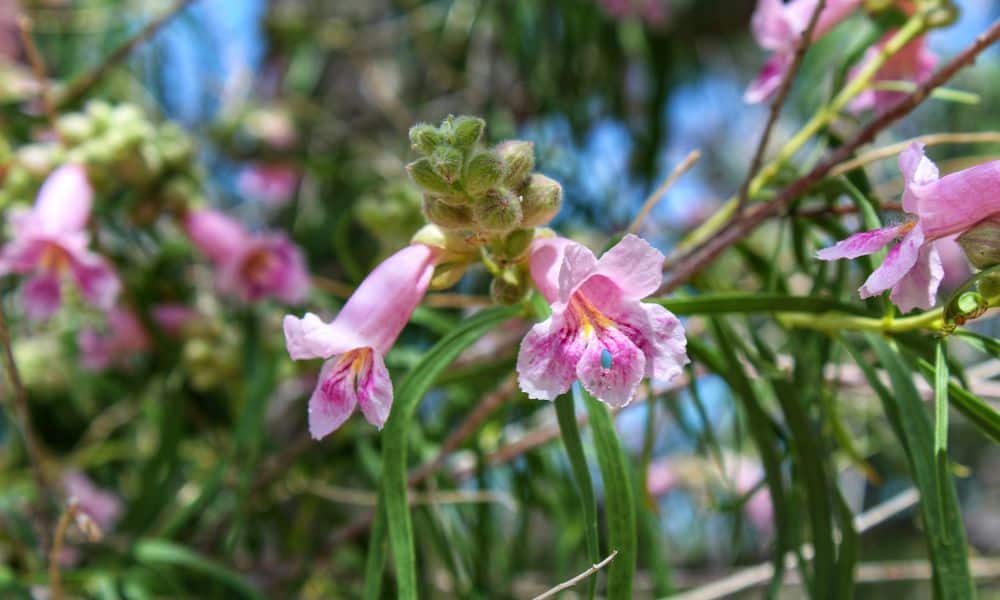
Looking for more native flowering tree ideas? Be sure to download my free printable PDF of 5 Texas Flowering Trees. You can take this handy one-pager with you to the plant nursery.
What Does a Desert Willow Tree Look Like?
The Desert Willow is a small to medium sized tree (typically around 15-20 feet tall) with long narrow leaves that are 3-6 inches long, similar to those of willow trees (although Chilopsis linearis is not a true willow). The thin leaves give it an open and airy growth habit.
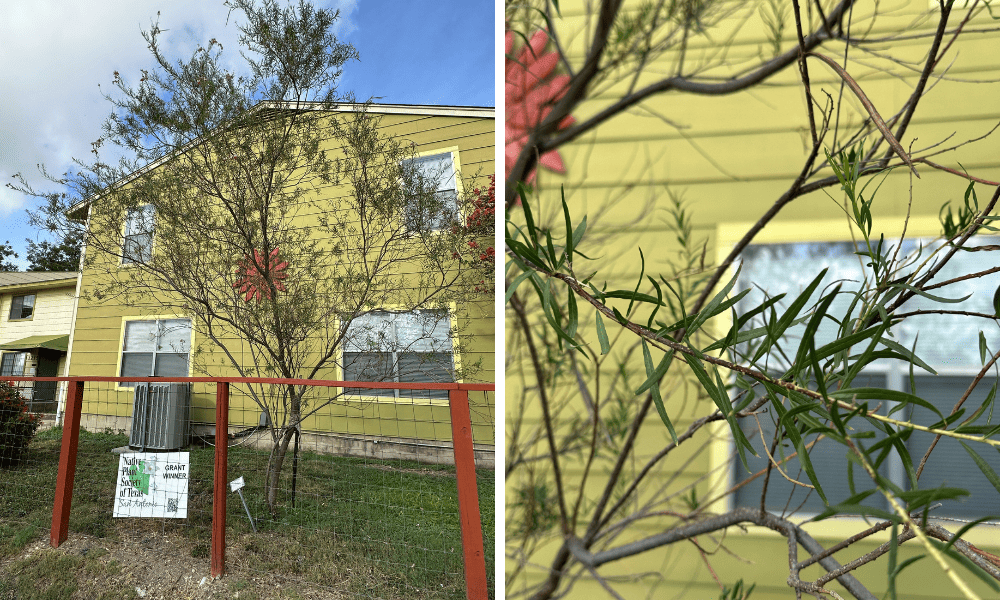
The Desert Willow has a single trunk has smooth gray bark. Its fragrant pinkish purple flowers resemble orchid blooms. After flowering, it produces seed pods that are up to 10 inches long.
5 Reasons to Plant a Desert Willow Tree
1) It is drought tolerant
The native habitat of the Desert Willow is sandy washes of western Texas, the Sonoran Desert, and Mojave Desert in the southwestern United States. This heat-loving plant likes well-drained soils. It can handle clay soils but prefers limestone soils.
It is important to water Desert Willow well its first year to help establish its root system but it needs minimal supplemental water once established.
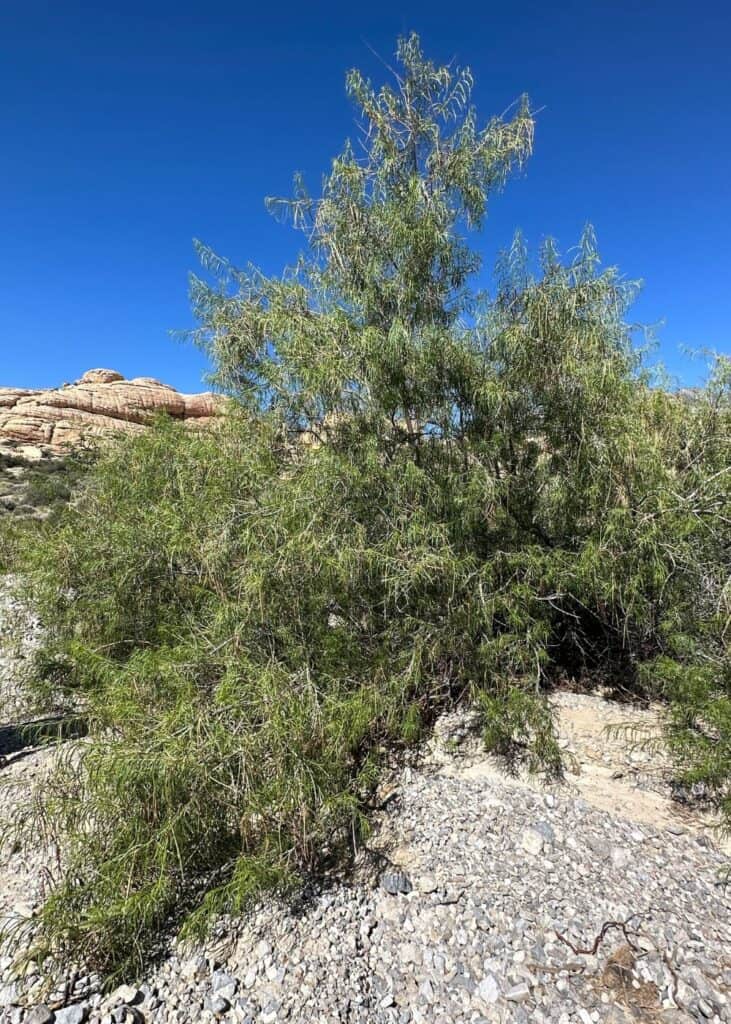
2) Showy flowers
The Desert Willow tree can bloom from late spring to early fall after rains, with the most heavy bloom period tending to be in early summer. The fragrant flowers attract bees and other pollinators.
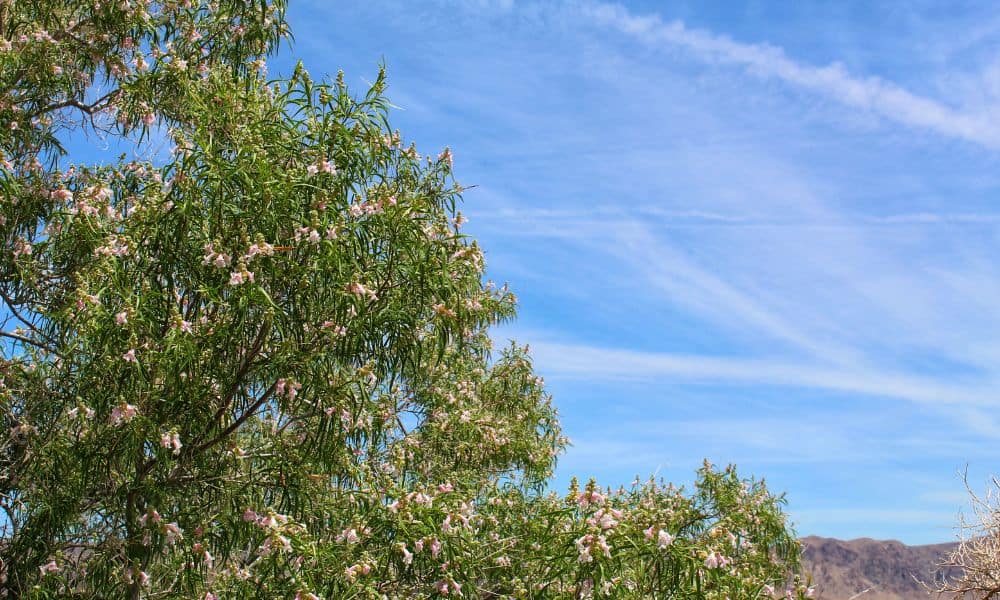
3) Small ornamental tree
Chilopsis linearis is a small deciduous tree can be grown as a small tree or a large shrub. It is fast growing, and prefers soil that dries out completely between rains. This encourages more blooms and a hardier tree.
4) Looks great with other Texas native plants
I saw this combination of a Desert Willow tree paired with Prickly Pear cactus in the Texas Hill Country and loved it!
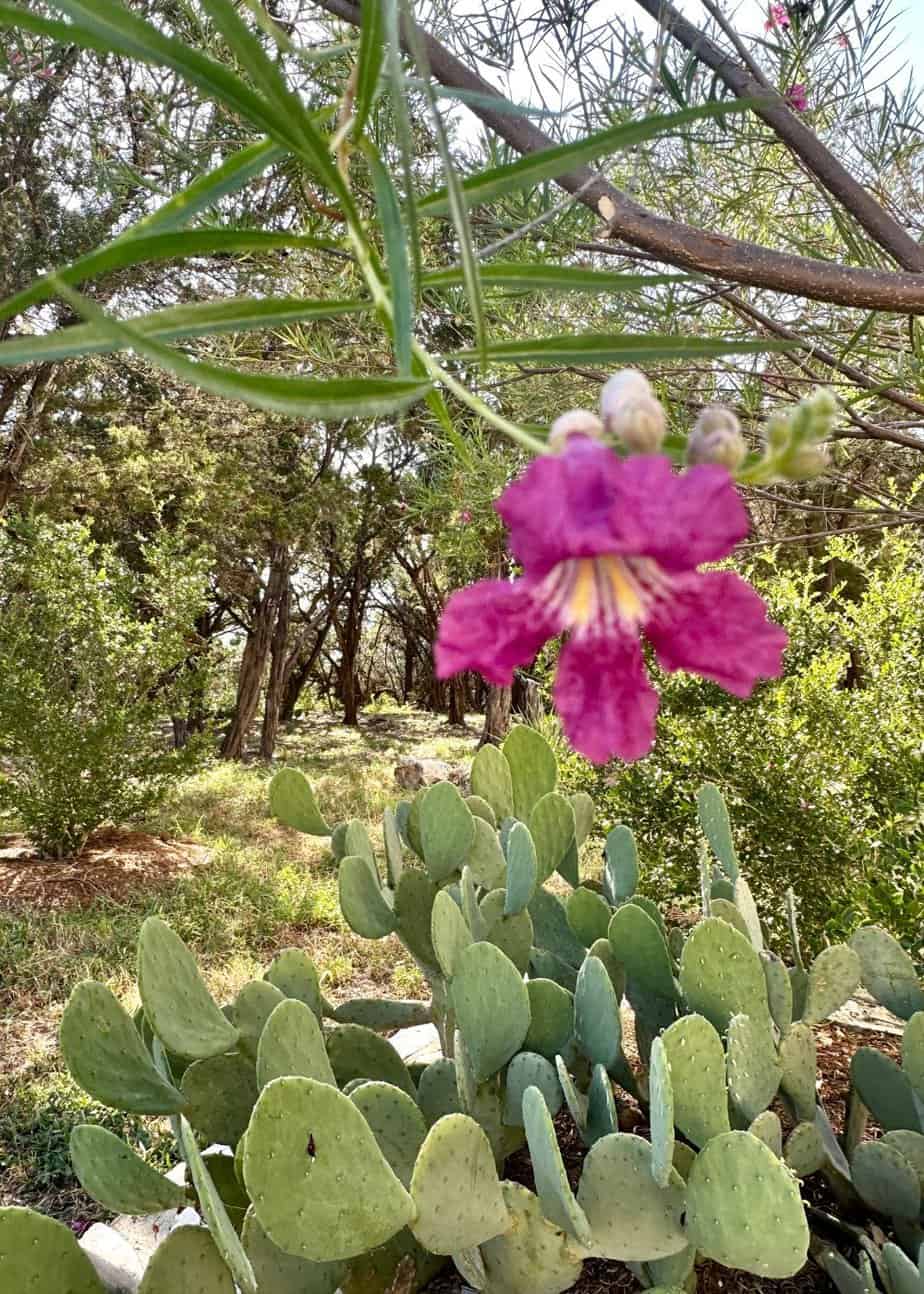
Incorporate Desert Willow into your landscaping along with other native Texas flowering trees such as Texas Redbud and Texas Mountain Laurel.
5) Good replacement for non-native landscape plants
Many of the common trees and shrubs in our Texas landscapes can be non-native invasive plants. Chilopsis linearis is a great replacement for Butterfly Bush (Vitex agnus castus) which can invade riparian areas.
Download the Free PDF: 5 Texas Flowering Trees
Looking for more native Texas flowering trees? I created a handy one-page PDF for you to print and take with you to the plant nursery. It includes a thumbnail photo of each plant along with its common and scientific names, size, sun needs and more! Get it here:


Welcome to Native Backyards! I’m Haeley from San Antonio, Texas, and I want to help you grow more native plants.
I have seen firsthand how the right plants can bring your yard to life with butterflies, bees, and birds. I’ve transformed my yard with Texas natives and I’m excited to share what I’ve learned with you.
Join my newsletter here! – each week I’ll send you helpful tips to make your native plant garden a reality!
Want to learn more about me and my garden? Check out my About page!

Great article, thanks Haeley!